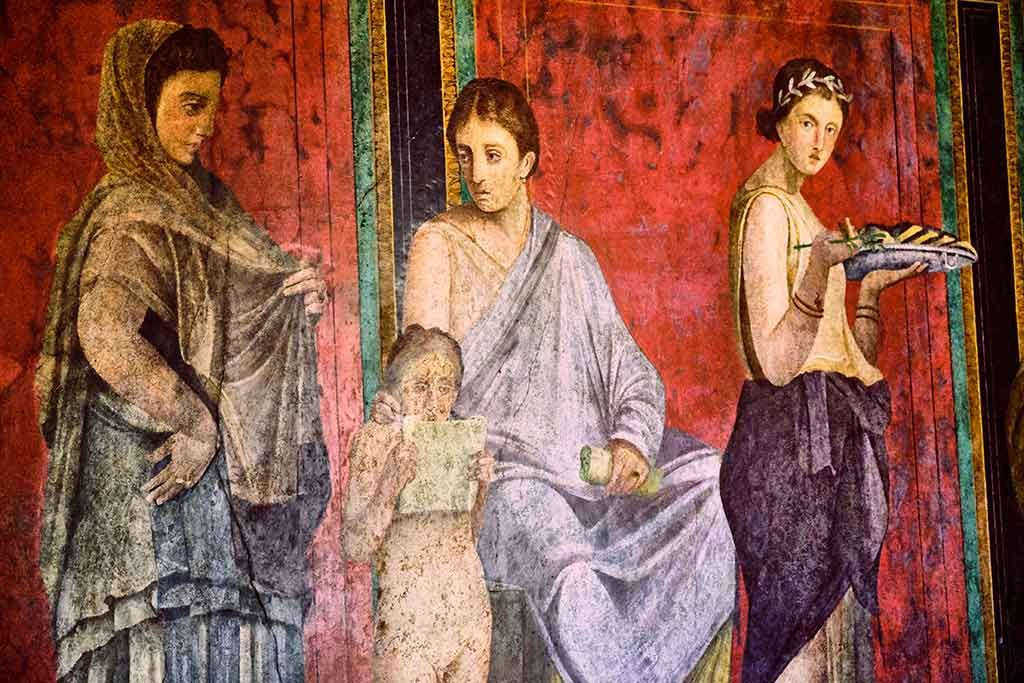
Pompei, found in Italy, is a resort town that is situated in the Roman Empire. It is located in the Campania region in the Bay of Naples, south of Mt. Vesuvius (a volcanic mountain). It was founded by Oscans (Latin people) from the Pompey gen.Most probably, the name Pompei must have originated from these people. Discover the first part of what to see in Pompei.
The Villa of the Mysteries
This Villa is located just outside the city walls. On it is the most famous Pompeian wall-painting. It contains a room (that is called The Initiation Chamber) which is decorated with very beautiful but strange scenes. Initiations took place here and they marked a transition from childhood to adulthood. There is an opening between the first and last scenes of the fresco that leads into the chamber. Fresco images in the Villa of Mysteries shows the passage rites for the Pompei women. What a tourist enjoys here most are the wonderful frescoes and the mystery which took place in the ancient times.
The Temple of Apollo
It is located on the western side of the Forum to the north of the Basilica. It is the oldest building in the Forum and was built by the Greeks. Estruscan items and some other oldest remains were discovered here which dates back to the 575 BC. A tour to this place gives you a beautiful glimpse of how beautiful temples were devoted to the gods of the Ancient Rome.
The House of the Faun
In the whole of the Roman Republic, it is one of the most luxurious aristocratic houses. It is also the most expensive residence in the ancient Pompeii measuring 3,000 meters squared. On its floors were lavish mosaics but only a few are remaining in place. Some of these mosaics were removed and taken on display at the National Museum of Naples. On your entrance into this massive construction, you will see a statue of The Faun although this is a duplicate. The original statue was also taken on display to the National Museum of Naples. It is a wonderful house which gives one a lifetime wonderful experience.
The house of the Ancient Hunt
This is an attractive building in Pompei that is located a short distance from the House of Faun when heading towards the Porta di Nola gate. It has got many frescoes of hunting scenes. It contains some very fine examples of the 4th style generation. On the walls of the 2nd cubiculum are the winter and autumn personifications. There are other beautiful decorations inside this great historical house.
Wonderful Paved Streets of Pompei
Pompei’s streets are all paved. Volcanic salt basalt is the material that was used in paving these wonderful streets that have never experienced mud. Be keen when walking on these paved streets during wet seasons because basalt is extremely slippery when wet. They were constructed with stepping stones which keeps your feet away from muck from cart-hauling animals.
Walks along these streets give one the whole tragic history of the Pompei city. Usually, it is very hot in these streets found in between the city walls. It is therefore advisable to carry a lot of water with you for body hydration purpose. Explore the whole of this area walking through these streets and let your eyes see all of the interesting features found in this place.
The Basilica
It is a wonderful public building that is located to the south west corner of the Forum. It was specifically used as a place of administering justice as well as where trade was carried on. The building’s main hall consists of a long columnar nave. Shaped tiles covered with stucco were used in the construction of these columns.
The House of the Tragic Poet
This is a house that is located in the Region VI across from the Forum baths. At its entry is a Latin word "cave canem" which means "beware the dog". There is also a decoration of a mosaic dog at the entrance which depicts all the features of a live dog. It contains a lot of paintings of Greek mythological subjects than any other place in the whole of Pompei. At its central position (center of the tablium floor) is a mosaic of actors that are about to go on stage to present a satyr play
USEFUL TIPS TO THOSE TRAVELLING TO POMPEI
You need cash because credit cards are not accepted at Pompei.
Come with plenty of water and a sun hut because this is a very hot place.
Great care should be taken when walking on the slick pavement stones.
Best time to make your trip to Pompei is between the months of November through to April. During this time range, hotel rates drop, bus fares are affordable and there are no congestions in the narrow streets of Pompei.
Advisable to arrive at Pompei just before the ruins open at 8.30. It is advisable to therefore stay somewhere nearby.
Enjoy your holiday to the fullest over here and I assure you that at the end of it all, you will be longing for more of the Pompei.
A dive into the past: Pompei - first part